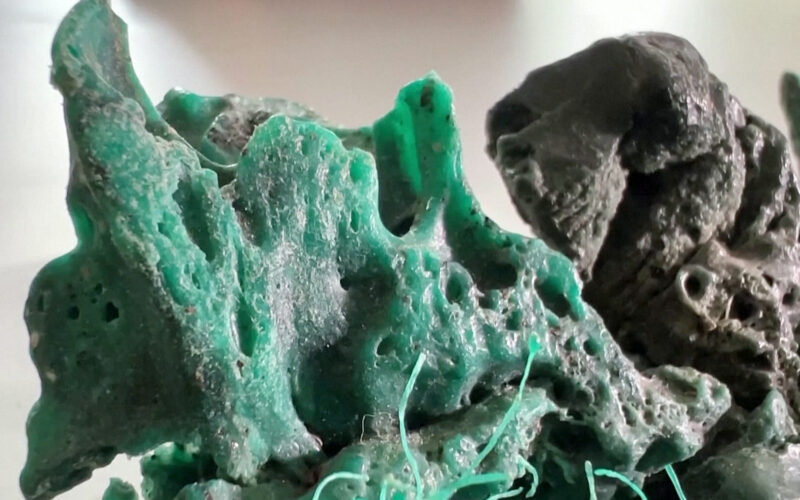The discovery of plastic rocks spanning five continents has captivated experts worldwide, drawing attention to the concerning issue of global plastic pollution. Reports reveal these peculiar formations, composed of compressed rock and discarded plastic polymers, have surfaced in coastlines and inland areas across 11 countries, serving as a stark reminder of the threats posed to ocean sustainability and human health.
Nomenclature Debate
Within the scientific community, a debate ensues regarding the nomenclature for these plastic-infused rocks. Terms such as plastistone, plasticrust, plastiglomerate, plastitar, anthropoquinas, and plastisandstone have been proposed to describe the diverse processes leading to their formation, offering unique insights into the intricate relationship between plastic and rock.
Discovery and Exploration
Geologist Patricia Corcoran initiated the discussion almost a decade ago with the discovery of the first plastic rock in Hawaii, coining the term ‘plastiglomerate.’ Recently, Deyi Hou, an associate professor of environment at Tsinghua University, and his team have taken the lead in investigating this phenomenon, reporting plastic rocks found inland and shedding light on the chemical bonding between plastic and rock. The team’s extensive review confirms the global presence of plastic rocks across five continents and 11 countries.
Formation Mechanisms
Hou and his team explore diverse methods through which plastic rocks can form, including burning during activities like campfires or waste burning, attachment to rocks by ocean waves, and chemical binding catalyzed by sunlight-induced plastic oxidation. These mechanisms highlight the multifaceted nature of plastic rock formation.
Global Occurrence
Plastic rocks have been reported in Brazil, Bangladesh, Hawaii, China, Japan, India, Italy, Portugal, Peru, the United Kingdom, and Spanish Curry Island. This widespread occurrence emphasizes the global nature of the plastic pollution crisis, exacerbated by intricate processes leading to these unique rock formations.
Environmental Implications
Plastic rocks alter microbial communities within soil and nearby environments, posing concerns about the release of microplastics into the ecosystem. This phenomenon underscores the urgent need for comprehensive solutions to mitigate the impacts of plastic pollution on local ecosystems.
Geological Perspective
In the context of geological processes, the annual deposition of 22-48 million metric tonnes of plastic by humans is not trivial. According to Hou and his team, plastistones are expected to persist, proliferating in regions heavily burdened by plastic pollution, presenting a long-term geological challenge.
Environmental Repercussions
The emergence of plastic rocks presents a multifaceted challenge, involving environmental, geological, and health issues. The ongoing debate over terminology indicates that these formations will contribute to a larger plastic pollution problem, requiring comprehensive solutions to address the environmental repercussions, from altered microbial communities to the release of microplastics. It underscores the urgent need for global initiatives to combat plastic pollution and preserve the health of our planet.
